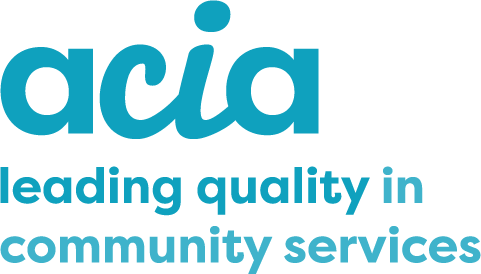- Disasters & Emergencies
- Service provider preparedness
- Participant preparedness
- Risk assessment and
intervention plan
Service provider preparedness for disasters and emergencies
Disaster resilience
Can your organisation continue to operate in a disaster or an emergency?
Can your organisation support your clients in a disaster or an emergency?
Disaster resilience is "the ability of individuals, communities, organisations, or countries exposed to disasters and crises and underlying vulnerabilities to: anticipate, reduce the impact of, cope with, and recover from the effects of adversity without compromising their long-term prospects." (IFRC)
Disaster resilience is about 'bouncing back' from disasters and emergencies.
Disaster resilient organisations can continue to provide services to people in the community despite the crisis and protect the wellbeing of staff and volunteers. In these ways, disaster resilient organisations contribute to the overall resilience of people, families and communities.
Six Steps to disaster Resilience
Step 1 Leading Resilience
Developing disaster resilience requires strong leadership. Communities and community organisations that can ‘bounce back’ from disasters and emergencies are important. Organisations that are not well-prepared will not be able to support their clients and communities to recover. Community organisations are generally not well prepared for disasters and emergencies and so it is particularly important that the leadership of community organisations steps up to the role of leading their organisation's disaster preparedness.
Step 2 Building Networks
Being disaster resilient means being linked with local networks. Networks must include emergency services and community organisations. Effective networks can: share expertise and knowledge; build better local emergency management plans; enable collaboration and coordination in planning for and responding to disasters and emergencies. People who are particularly vulnerable to the impacts of disasters need to be linked to these networks.
Step 3 Knowing your Risks
Being disaster resilient means knowing and understanding the risks your organisation faces. Identifying risks is not a simple process. It requires 'what if' thinking and analysis. Examples and scenario planning are a great way of getting the idea of what’s involved in 'what if' thinking. There are risk registers that can help you with this work, particularly the risks from things that haven’t happened yet. When risks are identified they can be incorporated into a risk register as part of your risk management process.
Step 4 Managing your Risks
Being disaster resilient means effectively managing your risks. There are very practical ways that organisations manage risks. While each organisation and the risks to be managed may be different it is useful to have a plan for disasters and emergencies. This Step highlights some of the core elements of a Disaster Plan.
Step 5 Preparing Others
Being disaster resilient means being prepared to help keep people safe and get them back on their feet after a disaster or emergency. Community organisations are well placed to support clients, staff and volunteers to become more prepared. There are simple actions you can take now to help people for when they may be at their most vulnerable, during an emergency; a time when you may not be able to support them in the way you usually would.
Step 6 Learning and Inspiring
Being disaster resilient means learning and continuously improving our preparedness plans. Building disaster resilient is an ongoing process that requires updating plans for disasters and emergencies, testing plans and improving plans. A key part of improving plans is being well connected and up to date so it is important to participate in local events that help you and others prepare for disasters and emergencies and to share what you have learned with others
For more information go to ACOSS's Resilient Community Organisations web site.
Benchmark your organisation
Do you know how resilient your organisation is to disasters and emergencies?
Use this disaster resilience benchmarking tool to find out. Upon completing the self-assessment you will be provided with a resilience score and information to help you identify how to strengthen your organisation.
For more information go to ACOSS's Resilient Community Organisations web site.


